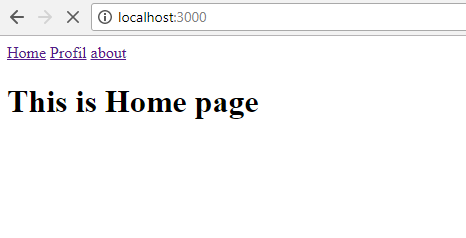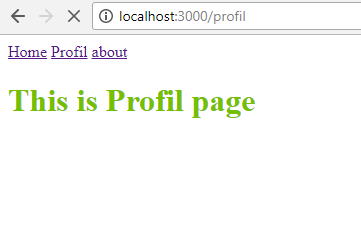How to Create Routing in Node.js

image-sources :https://nodejs.org/static/images/logo.svg
This tutorial we will see what the user input in our url and we will give response to user which page will be loaded. in the website must be the user will interact with our web, one of them through routing. and I will make the routing system in nodejs simply.
Create Routes.js
We will create a file with route.js name as our routing source.
var url = require('url');
var fs = require('fs');
function renderFile(url, response){
response.writeHead(200,{'Content-Type': 'text/html'});
fs.readFile(url,null,function(error,data){
if(error){
response.writeHead(400);
response.write("File not Found!")
}else{
response.write(data)
}
});
}
module.exports = {
handleRequest: function(request,response){
response.writeHead(200,{'Content-Type': 'text/html'});
var path = url.parse(request.url).pathname;
switch (path){
case '/':
renderFile('./index.html',response)
break;
case '/profil':
renderFile('./profil.html',response)
break;
case '/about':
renderFile('./about.html',response)
break;
default:
}
}
};
var url = require ( ' url ' ) : we imported the module to read our web url, Its automatically comes by itself when you install node jsvar fs = require( ' fs ' ) : we imported the module to read our web url,Its automatically comes by itself when you install node js.
function readFile( url, response ) { } : we create a function that will serve to render the file. in the render file we accept the url parameter, and the response. url is the parameter we get from the browser url.
response.writeHead( 200, { ' Content-Type ' : ' text/htm l' } ) : we will put code 200 means succeed and no problem. then we give { ' Content-Type ' : ' text/html ' } because this file has html.
fs.readFile( ' ./index.html ' ,null,function( error,data ) { } : we read the file with readFile . we read file index.html , we can add options in second parameter, but in this tutorial we pass null, cause we dont pass anything.
module.exports = { }
var path = url.parse( request.url ).pathname : we will catch what the user input in our url, here we save it on the variable path. we use the module that we have imported var url = require ( 'url' )
switch (path){
case '/':
renderFile('./index.html',response)
break;
case '/profil':
renderFile('./profil.html',response)
break;
case '/about':
renderFile( './about.html',response )
break;
default:
}
renderFile ( ' ./nameFile.html ' , response ) .
Create Server.js
Now we will make the server to render the file, in this tutorial I created server.js .
var http = require('http');
var route = require('./route');
http.createServer(route.handleRequest).listen(3000,function(){
console.log("listening on port 3000")
});
var http = require( ' http ' ) : Http is a module that automatically comes by itself when you install node js. This module is used to connect about the server.
var route = require( ' ./route ' ) : we will import the module from the route.js.route is just variable name.
http.createServer(route.handleRequest).listen(3000,function(){
console.log("listening on port 3000")
});
This is our way to create a server with the function createServer ( ) , and then we will passing data from the module route we have imported from route.js, the function we will use from the route module is handleRequest , so to access the function to be like this route.handleRequest and we listen in the server port localhost:3000
Results the Routing
We have 3 simple files to make example.
1 . index.html for path '/'

2 . profil.html for path '/profil'

3 . about.html for path '/about'

Done, we have made basic routing in node js. purpose of this tutorial so we understand how the routing pattern is in node.js, and remember we make it all pure with javascript language. So many of me hopefully this tutorial useful to you
Posted on Utopian.io - Rewarding Open Source Contributors
Thank you for the contribution. It has been approved.
You can contact us on Discord.
[utopian-moderator]
Hey @alfarisi94 I am @utopian-io. I have just upvoted you!
Achievements
Suggestions
Get Noticed!
Community-Driven Witness!
I am the first and only Steem Community-Driven Witness. Participate on Discord. Lets GROW TOGETHER!
Up-vote this comment to grow my power and help Open Source contributions like this one. Want to chat? Join me on Discord https://discord.gg/Pc8HG9x